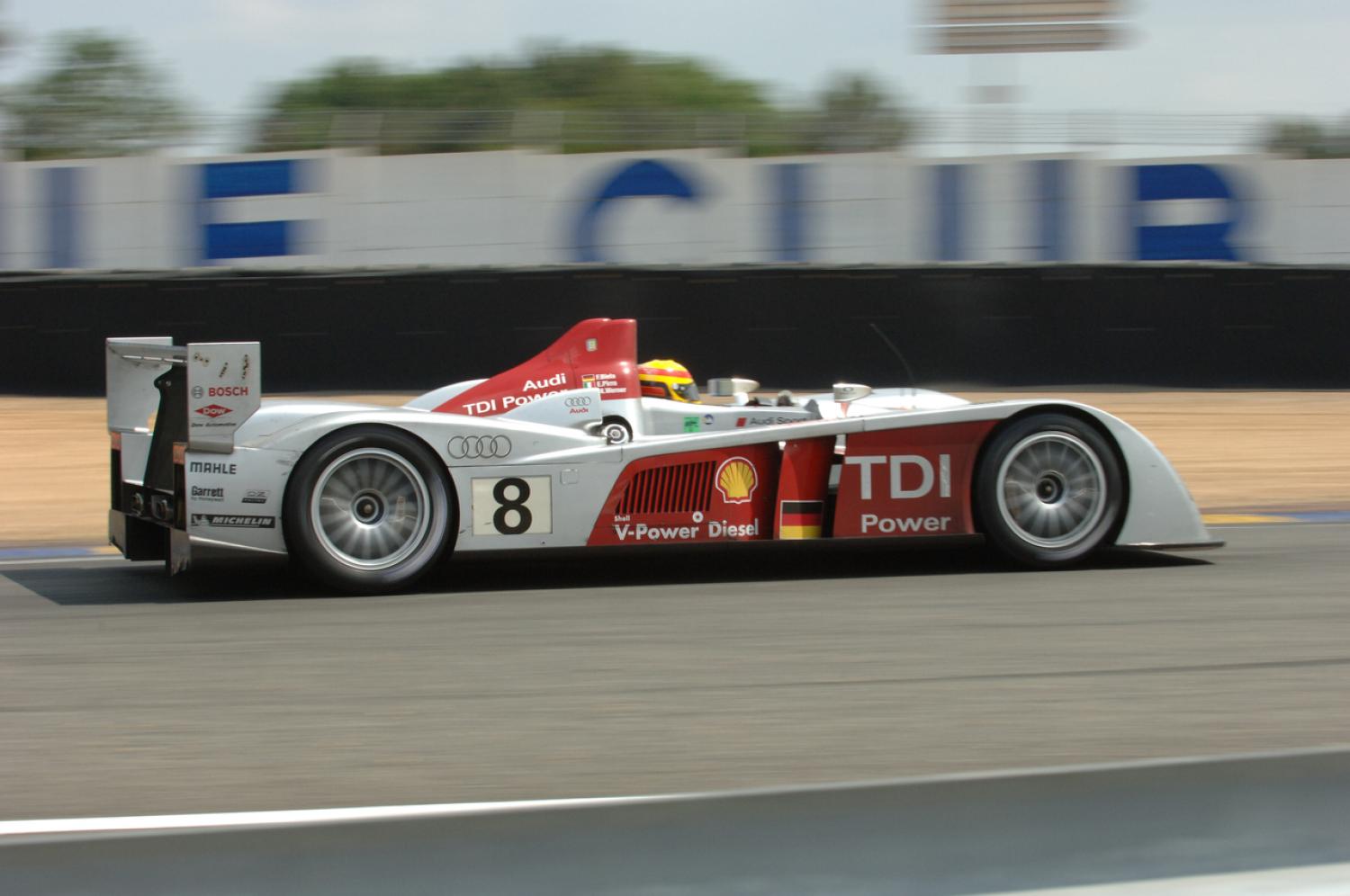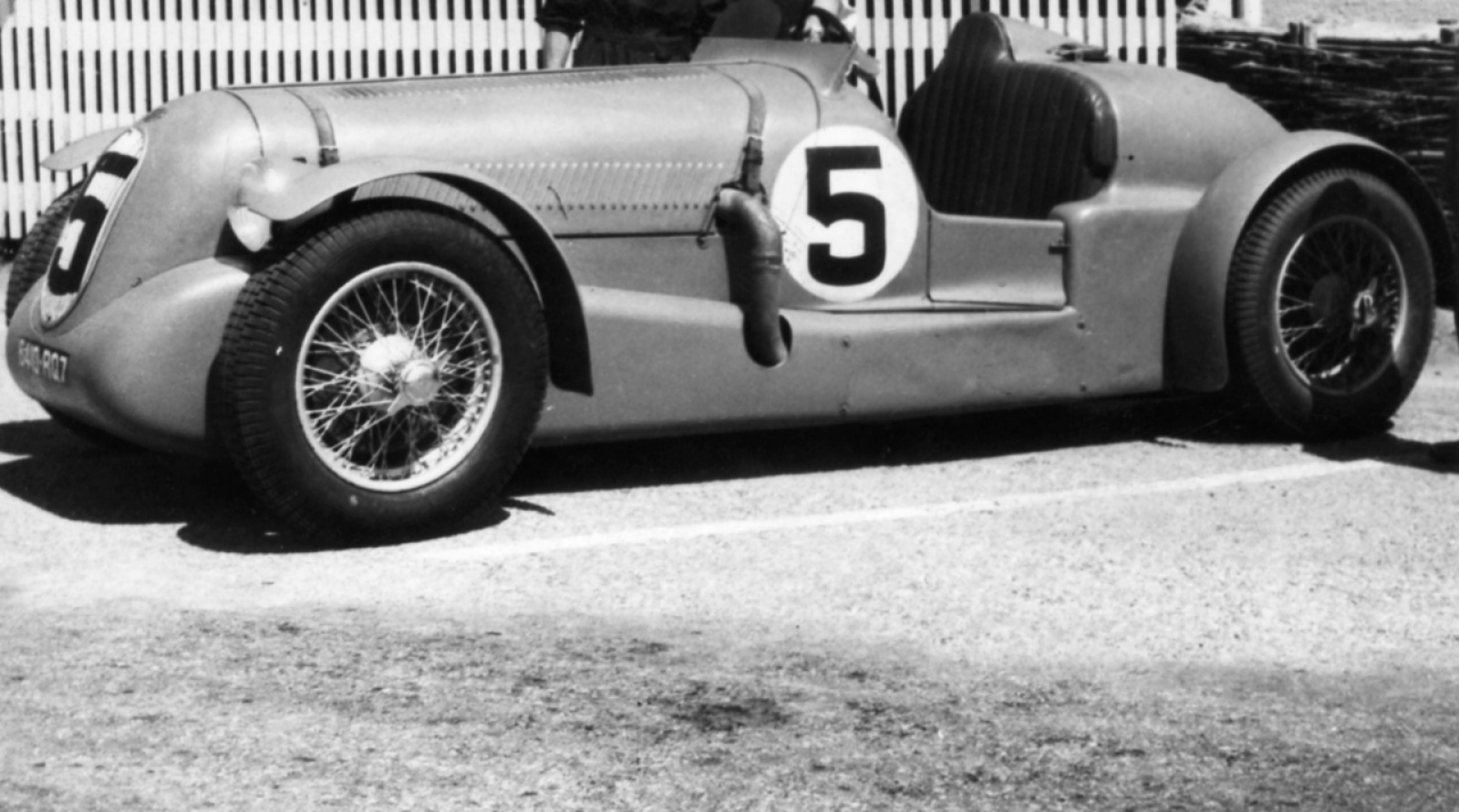24 HOURS CENTENARY – PERPETUAL INNOVATION ⎮ Diesel engine technology really began making its mark at the 24 Hours of Le Mans during the second half of the early 2000s (with a first win in 2006), but it had first appeared when the race resumed in 1949 on the heels of a nine-year hiatus due to World War II.
Refined petrol had been used to power combustion engines since their creation. As a result of the refinement process from crude oil to petrol, there remained a great deal of residue such as kerosene, oils and grease. German inventor and mechanical engineer Rudolf Diesel (1858-1913), who had filed patents to operate vegetable oil engines, turned to these petroleum residues as very inexpensive fuel for heavy oil engines.
The first automobile engine was promoted by Diesel during the Paris Exposition of 1900. With a displacement of 1,960 cm3, it developed about 20 hp. He also sold patents to major car marques as diesel engines would become increasingly efficient and powerful thanks to the work done by Sulzer and Bosch with injection pumps and turbochargers.
It would take until 1936 to see the first diesel engine car marketed, namely the Mercedes 260 D. After the war, Mercedes, Fiat, Austin and Peugeot all equipped their vehicles with diesel engines.
The main difference between a petrol engine and a diesel is the very high compression ratio of the latter. The compression ratio is the volume ratio measured between the piston and the cylinder head at bottom dead centre, then at top dead centre. For a petrol engine, it is between 8 and 10, but for a diesel, it is between 18 and 25. The objective of the diesel is to self-ignite the air/fuel mixture from the high pressure and temperature accumulated in the explosion chamber where the petrol engine needs a spark provided by the spark plugs. Consequently, the engine technology must take this extra pressure into account: pistons, connecting rods, cylinder head gaskets and valves must be sized to withstand this doubling of the compression ratio. High pressure fuel injection is essential in the combustion chamber (pressures up to 300 b on modern engines and even up to 2,000 b for common-rail engines). Injection pumps and injectors capable of generating these pressures are therefore required which explains the higher price tag for diesel engines.
Though the power of a diesel is lower than that of a petrol engine with equal displacement, it does generate a much higher torque while turning more slowly. The use of turbochargers started to become widespread in the 1980s. Lastly, thanks to the fact there is more energy in one litre of diesel than in one litre of petrol (around 10%), a diesel engine consumes significantly less.
The 1949-1951 pioneers
Diesel's first wave of popularity at the 24 Hours began in 1949 when the ACO, in its effort to kick-start the car manufacturing industry after the war, created new regulations for its inclusion. Brothers Jean and Jacques Delettrez seized the opportunity to field a car, under their own banner, equipped with a 4.4L 6-cylinder engine of GMC origin. It developed 70 hp with a top speed of 175 kph in the Mulsanne Straight. The car covered 123 laps before running out of diesel in the 20th hour.
On the strength of that relatively successful experience, the brothers returned in 1950 with the same car. It managed to remain on the track up to the last hour until its engine failed, but persistent problems had caused the car to cover fewer laps (120) than it did the previous year despite having run three hours longer.
Also in 1950, the Manufacture d'Armes de Paris, manufacturer of a diesel agricultural engine, engaged a MAP equipped with 4 cylinders of compressed 4,960 cm3 that earned it a corrected displacement of 9,948 cm3 developing 180 hp. History will remember that it was also the first car with a rear mid-engine to compete at the 24 Hours and that the illustrious 1939 winner Pierre Veyron joined forces with François Lacour at the wheel. Unfortunately, the adventure ended with a failed cooling system after 39 laps.
The following year, the Delettrez brothers returned after making some changes to their car's cylinder head. Unfortunately, those very modifications forced its retirement after 24 laps.
More than 50 years would pass before a new diesel tentative at the 24 Hours would open the doors to the triumphant years between 2006 and 2012.
The 2000s | The diesel engine finally gets its win
The turbo diesel had been enjoying a boom in the automotive industry since the late 1980s, encouraged by favorable diesel fuel taxation, and manufacturers – in particular the French – were surfing that wave.
In 2004, like the dawn of a new era, the Taurus team installed in a Lola B2K chassis a Volkswagen twin-turbo V10 (from a Touareg SUV) prepared by Caterpillar. The car released plumes of black smoke and was proven poorly developed, forced to retire in the fourth hour, after numerous pit stops, as the gearbox failed to support the enormous torque of its V10 diesel.
The concept of running a prototype with this type of engine did, however, appeal to racing car designers. But the diesel smell and black fumes did not seem very in tune with the idea of competition: enter the FAP (DPF or Particulate Filter), to save the day.
The FAP (DPF) is an element installed in the exhaust circuit to trap residual combustion particles, and reburn them during a regeneration cycle. This consists of significantly raising the temperature inside the FAP (DPF) by injecting unburned diesel to ignite with the temperature and burn the particles.
In 2006, Audi was seeking new challenges after its five wins in 2000, 2001 and 2002, then in 2004 and 2005 with the R8 TFSI (direct fuel injection), and the Bentley interlude in 2003 (based on Audi technology).
The German marque continued its domination at the 24 Hours with an all-aluminium 5,500 cm3 V12 twin-turbo diesel. Common-rail injection allowed a pressure of 1,600 bars to the injectors, and it developed from 650 hp to 780 hp over the years with a torque of more than 1,100 Nm. The Audi R10, then R15+ and finally the R18 TDI won five victories from 2006 to 2011, leaving the Peugeot 908 HDi FAP its sole win in 2009.
In 2007, Peugeot entered the race with a 908 HDi FAP. The engine was also a 5,500 cc, twin-turbo V12, developing 700 hp to 800 hp with a torque of 1,200 Nm. The manufacturer's marketing department insisted FAP be included in the 908's name as Peugeot was to use the car as an advertising point for its series models. Even though Audi chose not to mention as much in the name of its prototype, it was indeed equipped with a Filtre à Particules (Particulate Filter).
PHOTOS (Copyright - ACO Archives): LE MANS (SARTHE, FRANCE), CIRCUIT DES 24 HEURES, 24 HOURS OF LE MANS. From top to bottom: the Audi R10 TDI, first diesel prototype to win, in 2006, 2007 and 2008; the first diesel engine car of the Delettrez brothers, seen at the race in 1949 and 1950; at the wheel of the Audi R15 TDI+, Timo Bernhard, Romain Dumas and Mike Rockenfeller established the current distance record in 2010; the 908 HDi FAP's win in 2009 was the third for Peugeot and the last by a French constructor to date.




